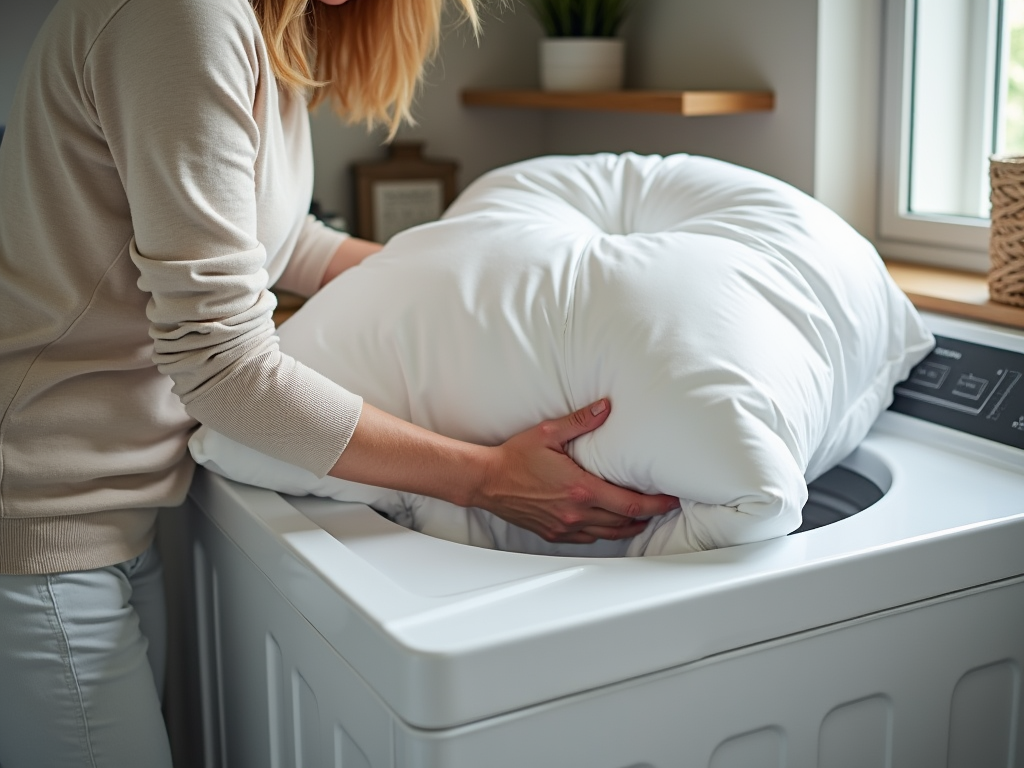Refreshing your comforter doesn’t have to be a daunting task. With the right steps, you can make it fresh and clean without losing its fluffiness or color vibrancy. This article will guide you through a foolproof method to rejuvenate your comforter and ensure it looks as good as new every time.
Understanding Your Comforter’s Material

Before you start washing, it’s vital to understand the fabric and filling of your comforter. Different materials like cotton, down, or synthetic blends require various care approaches. While cotton comforters are typically durable and can withstand regular machine washing, down-filled comforters need more delicate handling to maintain the fill’s integrity.
Check the care label for any specific instructions or warnings. This little rectangular tag often contains gems of information regarding temperature, drying techniques, and whether you can use bleach or other chemical agents. A little preparation goes a long way in preventing damage.
Pre-Washing Preparations

Gather all necessary supplies before setting up your washing station. This includes a gentle detergent and the use of a large-capacity machine. It’s recommended to pre-treat any visible stains with a mild stain remover. Let it sit for a few minutes to penetrate the fiber without causing discoloration or weakening the fabric.
Before washing, inspect the comforter for any holes or loose threads that could get worse during the process. Sewing them up or using fabric adhesive can save your comforter from unraveling. Finally, undo any buttons or clasps to prevent them from breaking inside the washer.
Once you’ve prepared your comforter, it’s time to wash it. Using a large-capacity washing machine is essential. A small machine can lead to overcrowding and insufficient cleaning. Follow these steps for the best results:
- Set your machine to the gentle cycle to minimize the risk of damage.
- Choose warm or cold water, avoiding hot water, which can shrink or fade fabric.
- Add a mild detergent; liquid options work best for even distribution.
- To ensure thorough cleaning and rinsing, consider running a second rinse cycle.
- Use an additional spin cycle to remove excess water and speed up the drying process.
Drying Techniques for Optimal Freshness
Proper drying is as important as washing when it comes to comforters. Use a large dryer and add a few clean tennis balls to help maintain the comforter’s fluffy texture. The tennis balls agitate the comforter, redistributing the fill and preventing clumps.
Set your dryer to a low-temperature setting to reduce the risk of overheating and damaging the fill. Regularly take the comforter out and fluff it manually to ensure even drying. If you have the time, air-drying on a sunny day can further enhance freshness and natural scent.
Conclusion
Washing your comforter doesn’t have to be a bi-annual headache. By understanding the material, preparing it properly, and following the right washing and drying techniques, you can keep your comforter as pristine and comfortable as the day you bought it. Regular maintenance ensures lasting comfort and beauty, making your bedding an investment in sweet dreams.
Frequently Asked Questions
Can I wash a down comforter at home?
Yes, you can wash a down comforter at home, but it’s crucial to use a mild detergent and a large-capacity machine to avoid damaging the down fill.
How often should I wash my comforter?
A comforter should be washed every few months, or more frequently if it’s heavily used or if anyone in the household has allergies.
Can I use bleach on my comforter?
It’s best to avoid bleach as it can weaken the fabric and affect colors. Always check the care label for specific detergent guidelines.
What do I do if my comforter starts clumping?
If clumping occurs, tumble dry with tennis balls or manually fluff it to redistribute the fill. This will help restore the evenness of the comforter.
Is it necessary to dry-clean a comforter?
Dry-cleaning is not necessary for most comforters unless specified on the care label. Home washing is usually sufficient if done correctly.


